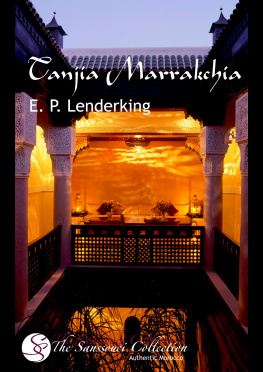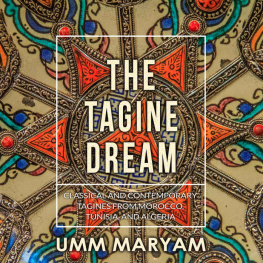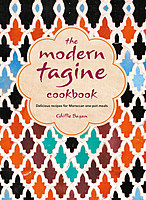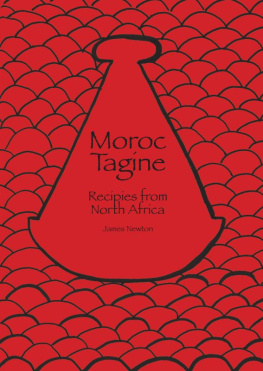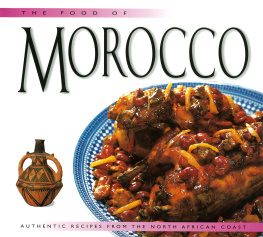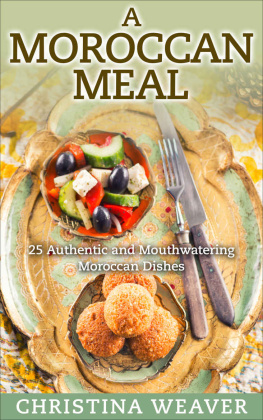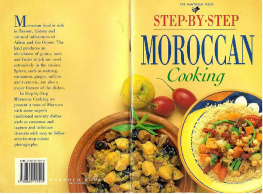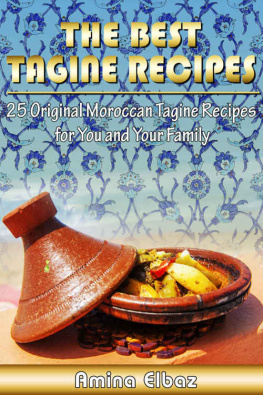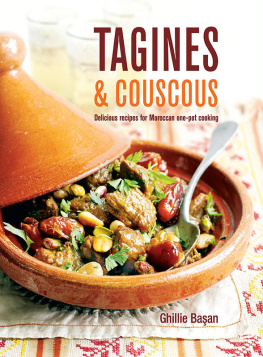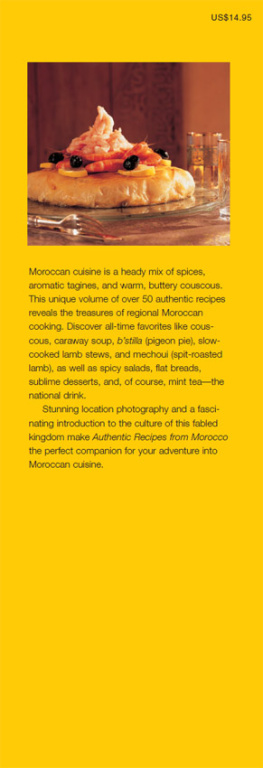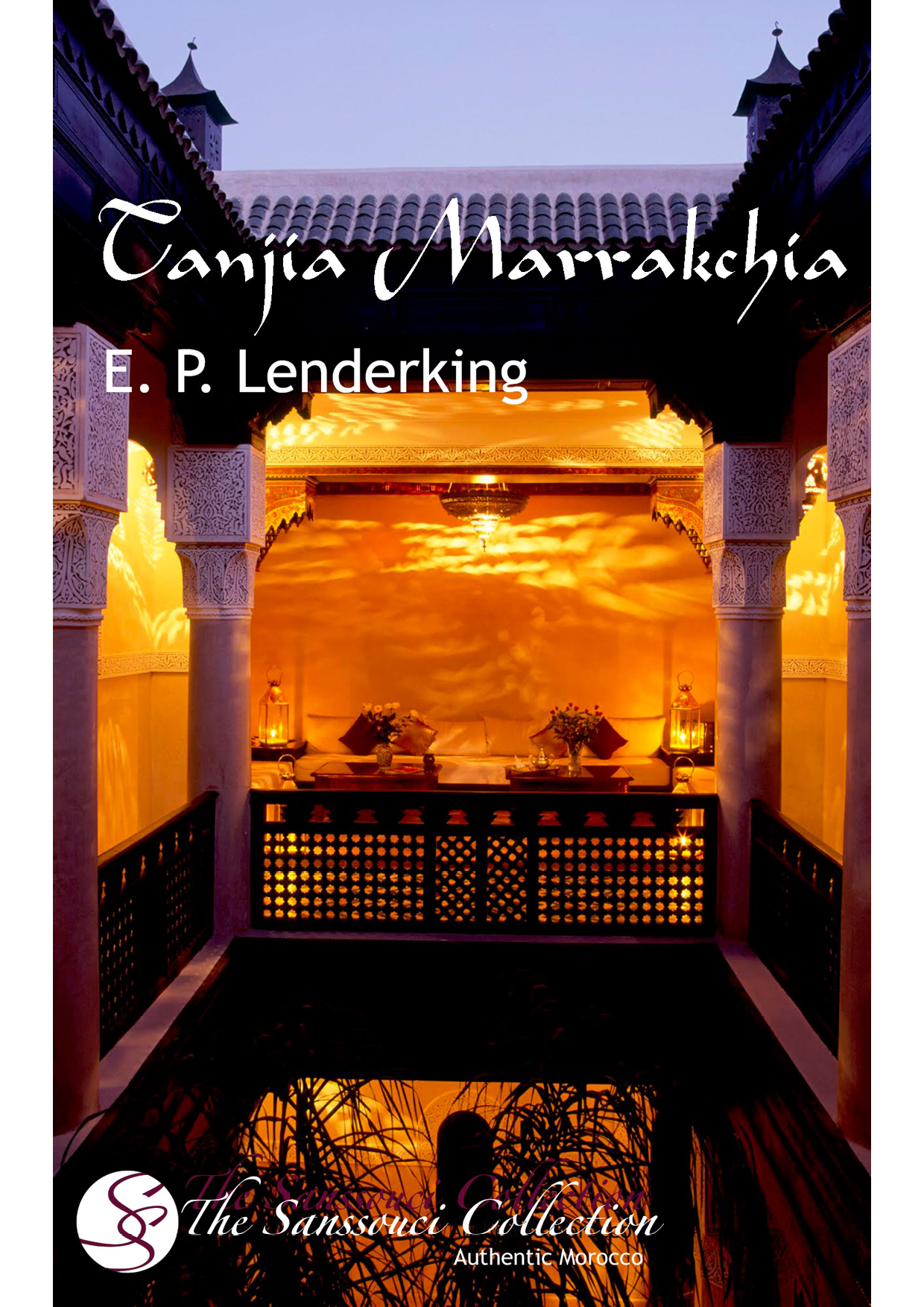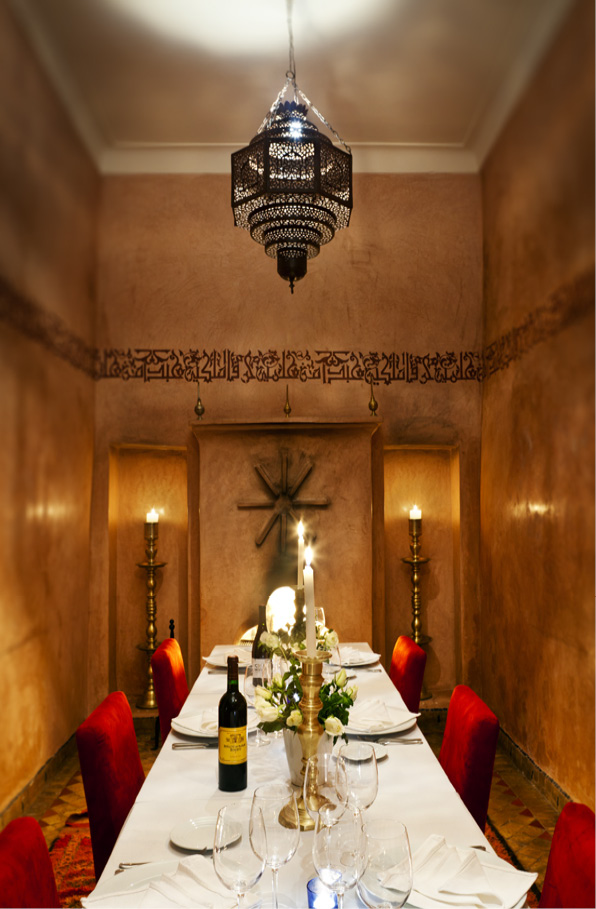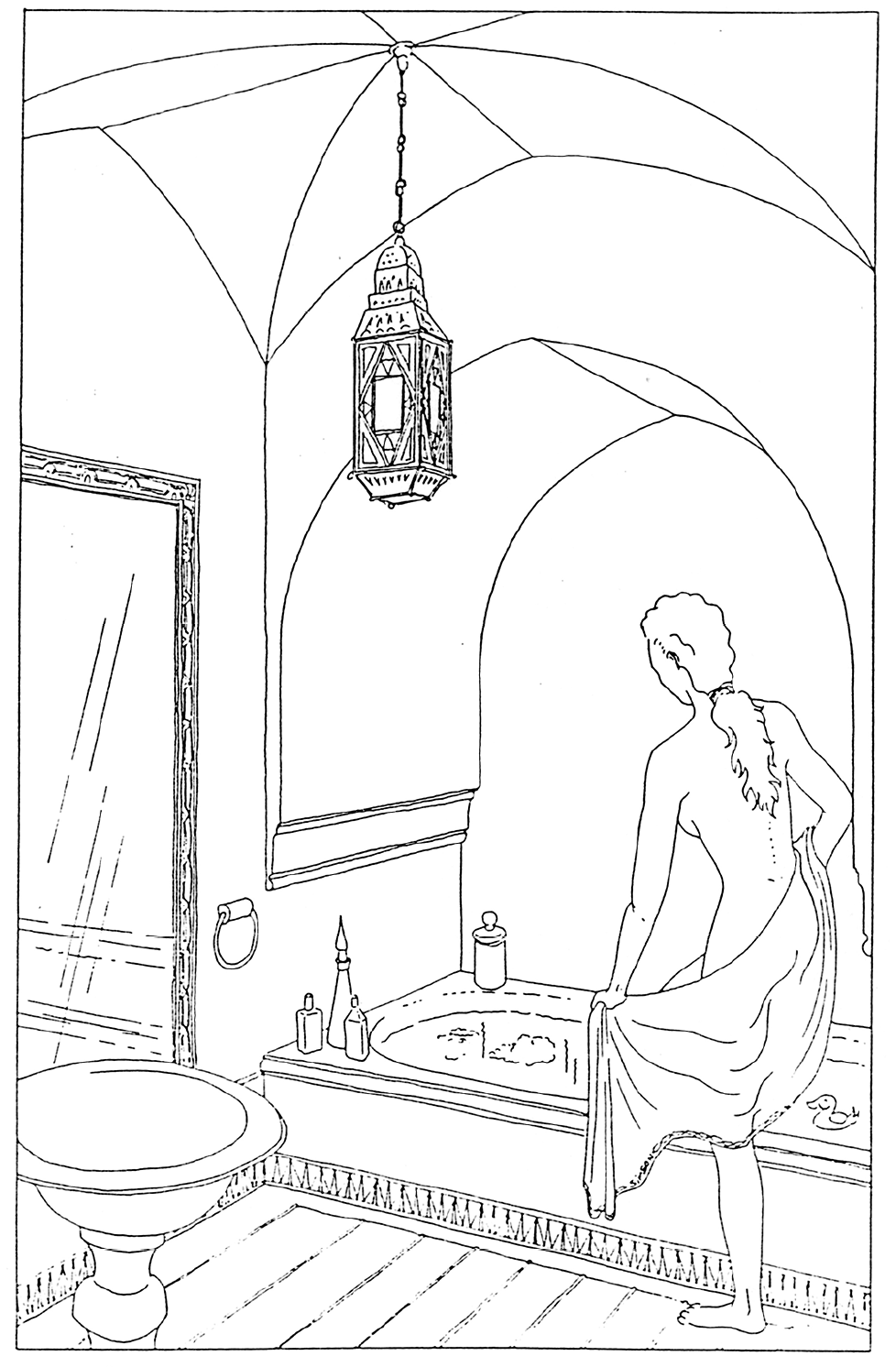Sam and Sam Clark, Moro
At the back of the book you will find a more complete list for further reading. The past few years has seen an explosion in titles. We are delighted by the growth and interest in Mediterranean cultures, foods, and particularly North African and Moroccan.
The geometric designs used to mark chapter endings are Berber icons found in their colourful carpets. The architectural drawings of Dar Les Cigognes are the work of Charles Boccara d.p.l.g and his team.
Front cover photo of Dar Les Cigognes by Jean Bernard Yaguiyan; rear cover photo by Alan Keohane, featuring Abdellatif, our indomitable first gardien who faithfully slept on the building site. Inside back jacket photo by Rush Kress.
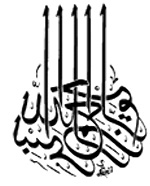

Dar Les Cigognes
Would that you could live on the fragrance of the earth, and like an air plant be sustained by the light. But since you must kill to eat, and rob the newly born of its mothers milk to quench your thirst, let it then be an act of worship.
Khalil Gibran, The Prophet
On holiday from Britain one cold winter, and after a grand tour of the country, our travels ended in a magnificent riad , now operating as one of Marrakechs finer small hotels. My future wife and I could not but fall in love with the beauty of the place, its mystery and seduction.
Perhaps we caught the Millennium Bug and, taking leave of our senses, embarked on a journey that we are still following. We bought a house, only realising our folly as we landed in the cold, grey light of a January morning at Gatwick airport. We took one look at each other and burst out laughing, as much from dread as from the absurdity of it all. What had we been thinking?
Back a month later, and every month thereafter for the following years, we increasingly fell under the spell of this endlessly captivating country. Marrakech, though changing so rapidly, remains an intensely vibrant city, rich with the blood of North Africa coursing through its veinswith a sense of the fabulous and mystical, but above all, alive.
The culinary arts are an expression of this passion and, insofar as cooking is a kind of performance art, in Moroccan cuisine we see ample evidence of the fabulous, the need to tell tales, at least a pinch of mysticism and, most certainly, magic. This form of self-expression is ultimately about the home and the hearth, which is profoundly appropriate for the culture and the place.
This book is an attempt to capture that unsuspecting ability to surprise that every Moroccan possesses and that is so much a part of the cuisine.

Origins of Moroccan Cuisine
Al maghrib al aqsa; furthest land of the setting sun
The Arabic name for Morocco
The Northwest corner of Africa, where present-day Morocco is situated, has seen the footprints of many cultures, all of which have left their traces on the cuisine. The Berbers, the Phoenicians, the Romans, the Visigoths, and the Jews all came and made their marks on the culture long before the first Arab invasion. These early imprints were to prove deep-rooted. Although the Arabic cultural influence on Morocco has been profound, Moroccan cuisine, as an expression of the national character, has proved more resilient.
The two outer reaches of Arab influence, Moghul India and Andalucian Spain, ultimately share this power. The Arabs were the ultimate messengers, carrying with them the rebirth of Western culture with its origins in Greco-Roman thought, rescuing us from the Dark Ages but also bringing spices from one side of their empire to the other. While the Indian sub-continent can be said to be the birthplace of sophisticated spicing, without the Arabs, the influence of Indian cuisine would not itself have been so profound. As each culture across the Arab Empire adapted this culinary sophistication, the use of aromatics, and the layers of subtlety of Moghul cuisine only again reached such dizzying heights when reaching its Western limit, where there was already a strong culinary tradition and an Empire able to incorporate the learning into its own cuisine.
The Arabs brought the culinary secrets learned from the Persians and Indians to Morocco, while from the trans-Saharan caravan routes came all manner of sugar and spice. The result of this confluence was something uniquely rich and fundamentally different from the rest of the food of the Arab world, strongly African. In Morocco, you will find no hummus , falafel , tabbouleh , moutabal , or any of those other common Mediterranean Arab dishes. To be sure, you will find similar items, particularly amongst the starters in Morocco, but it is more likely that the influence ran the other way.

